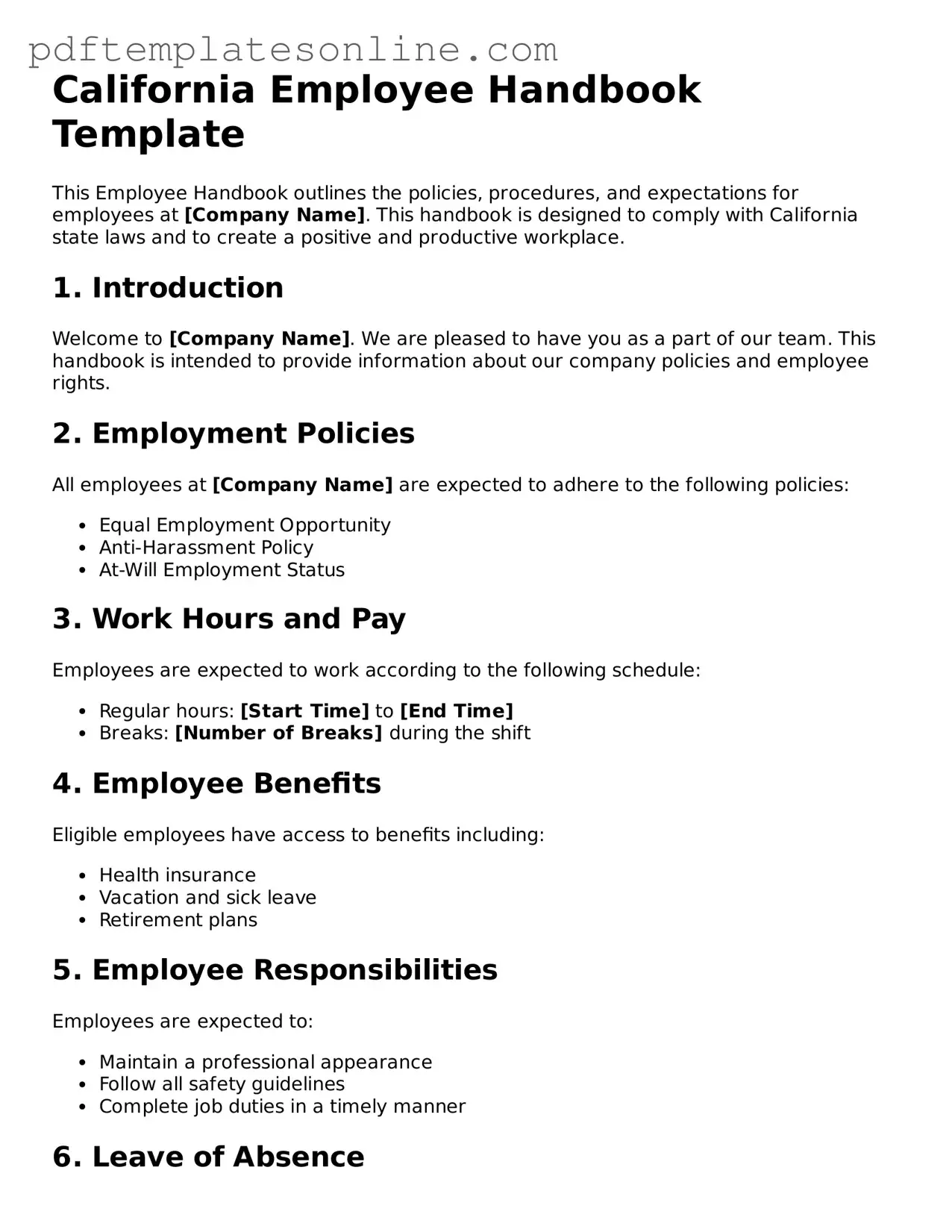Completing the California Employee Handbook form is an important step for both employers and employees. However, several common mistakes can hinder its effectiveness. One frequent error is failing to read the entire handbook before signing. Employees may overlook critical policies or procedures, which can lead to misunderstandings later on.
Another mistake involves not updating personal information. Employees often forget to provide current contact details or changes in their status, such as a name change due to marriage. This omission can create communication barriers between the employer and the employee.
Some individuals neglect to ask questions about unclear policies. When employees do not seek clarification on specific sections, they may unintentionally agree to terms that they do not fully understand. This lack of communication can result in confusion and potential conflicts down the line.
Additionally, many people skip the acknowledgment section. This section is crucial as it confirms that the employee has received and understood the handbook. Failing to sign this part can lead to disputes regarding whether an employee was aware of the policies.
Another common oversight is ignoring the importance of the handbook as a living document. Employees may not realize that policies can change. Regularly reviewing the handbook is essential to stay informed about any updates or modifications that could affect their rights and responsibilities.
Some employees also forget to keep a copy of the signed handbook for their records. Without this documentation, it can be challenging to reference agreed-upon policies in the future. Keeping a personal copy ensures that employees have access to the information they need.
Lastly, individuals sometimes fail to consider the implications of the handbook's policies on their specific roles. Each position may have unique requirements or expectations outlined in the handbook. Understanding these details is vital for compliance and overall job performance.
